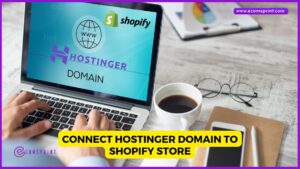Manufacturers developed products and services, trained inside and outside salespeople, and dispatched them to meet potential consumers face to face at trade exhibitions, in offices, and through tightly controlled advertising campaigns in industry journals.
This type of sales-only engagement with business partners worked even a decade ago. However, in today’s competitive environment, manufacturers are no longer exempt from marketing responsibilities.
However, content marketing, social media, SEO, and a variety of other inbound marketing strategies can help you climb above the referrer and expand your brand in new directions.
You must first comprehend the client before you can create a marketing strategy. Are you targeting businesses or consumers with your marketing?
Let’s learn in details on Internet marketing for Manufactures.
Internet Marketing for Manufacturers
Internet Marketing for Manufacturing marketing is business-to-business marketing. It’s more complicated, and the sales cycle is longer than B2C.
TARGET AUDIENCE: Other businesses, such as downline supply chain manufacturers, distributors, retailers, or business end-users, such as restaurants or construction firms, are the target customer. You should know the industry you’re targeting, the sizes and types of businesses that require or want your products, and who can make purchase decisions within those businesses.
CUSTOMER REQUIREMENTS: Business customers require high-quality goods that are compatible with their procedures and budgets. They must be able to supply and serve their customers with confidence while also profiting.
DRIVING FACTORS: Price, credit, and terms; what consumers think of your brand; how much help you provide via technical, marketing, and other resources; and if you can gain buy-in from all the relevant decision-makers are all elements that influence whether or not a business chooses your products.
BUYING PROCESS: The procurement procedure in the business world can be challenging. Discovery and pricing comparisons, estimates, demos, and final purchase selections are all part of the process. You may need to impress more than one level of decision-makers; typically, the larger the purchase, the more layers of decision-makers you must impress.
Managers, purchasing agents, executive decision-makers, accounting or finance teams, and other subject matter specialists are all involved in the acquisition.
Strategies for Internet marketing for Manufacturers
1. Publish Content
You’ve probably heard that Content is KIng. It’s a cliche that’s been around for a long time, and it still applies to online marketers today. All of the following initiatives rely heavily on your content, which is the material you post on your website or social media platforms.
Search engine optimization guarantees that you appear when potential clients conduct an online search.
It establishes you as a reliable manufacturer. Nearly half of individuals read three to five pieces of material from a company before contacting them for additional information or a quote.
It aids in moving individuals down the funnel. For example, a business contact in the awareness stage might uncover something in your material that will help them go to the consideration stage.
Sites that use a variety of content types have a better chance of increasing revenue. This is because people respond differently to different pieces of content, and one person may prefer to read about your product while another prefers to watch a video.
When it comes to intricate manufacturing items, you may need to provide both to help educate the potential client.
Video material, case studies, blogs, infographics, and slide presentations should all be included on your website. Remember that you’re not the only one attempting to persuade someone to buy something; your business contact may be trying to persuade stakeholders, and your content can be used to produce persuasive presentations.
2. Email Marketing
Manufacturing marketing, as previously stated, is frequently a long game. When potential clients consider options, reevaluate objectives, and get caught up in day-to-day operations, it’s easy for your message to get lost in the shuffle.
Email marketing newsletters allow you to collect interested leads and show up in their inboxes on a regular basis. It keeps your name in front of their minds.
Email can also be used to automate marketing campaigns. You may use drip campaigns to send a series of communications to potential customers once they complete a specified activity. Consider the following scenario:
A whitepaper on a piece of restaurant equipment is downloaded. They do so by entering their email address.
Over the course of a few weeks or months, you send them emails. These letters could include details such as how much money the product will save them over time, how the equipment will increase quality, and the possibility of increasing culinary operations.
Every email provides a new touchpoint and a new CTA, informing the potential client that you’re accessible to provide a price or more information.
3. SEO (Search Engine Optimization)
Even Google acknowledges that the road to purchase can be long and winding. However, many people begin their search with an online search. Nearly 90% of purchases begin online, and most marketers consider SEO to be one of the top five traffic generators.
In other words, if you don’t show up in the search engines, you’re missing out on a lot of potential customers.
4. Paid Advertising
SEO isn’t a quick thing. You can’t rank your way into Google’s top organic page results; instead, it needs dedication to content, patience, and consistenncy.
This is why many businesses use Google Ads and pay-per-click (PPC) ads.
Paid marketing campaigns may put your manufacturing company on the first page of search results in minutes, but your advertising must be effective.
That entails conducting research to determine which keywords to target and how your buyer profiles could conduct internet searches.
5. Make use of Social Media
Another place to raise brand awareness and consumer loyalty is through social media. It also allows you to connect with potential clients in a natural way, usually where they are already online. While social media platforms like Facebook, Instagram, and Twitter can be effective for B2B marketing, manufacturers should start with LinkedIn and build a strong presence there.


